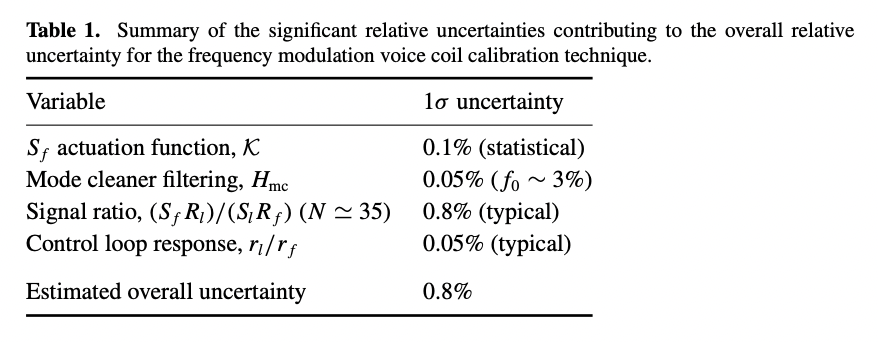¶ Calibration Monitor
To improve sensitivity to gravity waves, the interferometer arms feature 4 km long optical cavities, Fabry-Perot resonators produced by 10 kg input and end mirrors, or test masses. They are suspended as pendulums in order to isolate them from seismic motion and to create 'freely falling' test masses in the horizontal plane. The locations of the end test masses (ETMs) are regulated by voice coil actuators that use rare-earth magnets bonded to the rear surfaces of the mirrors to keep these cavities in resonance with the laser light. The interferometers will detect the distortions in spacetime caused by passing gravitational waves as differential arm (DARM) length fluctuations, which will be suppressed by the DARM length control loop via the ETM voice coil actuators.

The statistical uncertainty in the Sf calibration function, K, is determined using two methods. First, repeated measurements are made at a single frequency; second, measurements are made at multiple frequencies over a span from 90 Hz to 2 kHz (see figure 3). Both methods yield a standard error in the calibration function of approximately 0.1%, originating from uncertainty in measuring the sideband-to-carrier power ratio.
¶ Channel Name Breakdown:
| Name | Description |
|---|---|
| Channels | |
| CAL | Calibration Monitor |